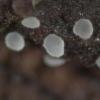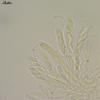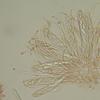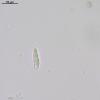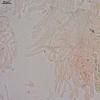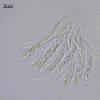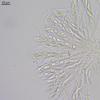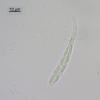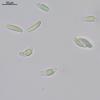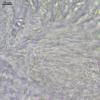
27-11-2025 15:41
Thomas LæssøeSpores brownish, typically 4-celled; 26.8 x 2.4;

27-11-2025 12:01
Thomas Læssøehttps://svampe.databasen.org/observations/10496727

27-11-2025 11:46
Thomas Læssøehttps://svampe.databasen.org/observations/10493918

27-11-2025 11:31
Thomas LæssøeCollectors notes: Immersed ascomata, erumpent thro

23-09-2025 13:31
Thomas Læssøehttps://svampe.databasen.org/observations/10534623

25-11-2025 14:24
Thomas Læssøehttps://svampe.databasen.org/observations/10490522

26-11-2025 18:13
The entire run of Mycotaxon is now available throu

25-11-2025 11:03
Mick PeerdemanHi all,One of my earliest microscopy attempts, so
Polydesmia sp.
Nina Filippova,
24-01-2013 13:29
1) probably Polydesmia, but asci with inamyloid pore, and spores nonseptate, otherwise paraphyses propoloid, and if to follow the key of Korf (1978) it may be P. fructicola.
Apothecia pustulate to flat-cupulate, grayish, translucent, up to 400 x 100 mk, hymenium minutely rough, outside and edge appear smooth.
Excipulum textura prismatica, outer hyphae end by ventricose or clavate cells (hairs); asci clavate, clamped, with inamyloid pore, 54 x 7 mk; spores ellipsoid and curved (allantoid), non-septate, with large irregular guttulae, 11,6 (10-13,1) x 3,4 (3,1-3,9) mk; paraphyses irregularly bulged in different parts, branched 2-3 times, curved at the tips.
Hans-Otto Baral,
24-01-2013 15:08

Re : Polydesmia sp.
Dear Nina
Polydesmia has 3-septate spores and amyloid asci, and these apically curved paraphyses are also untypical of that genus.
Do you have the fungus fresh? Please do photos in water, that would greatly help. Possibly there are guttules in the paraphyses that disappear when mounting in such lethal agent.
Zotto
Polydesmia has 3-septate spores and amyloid asci, and these apically curved paraphyses are also untypical of that genus.
Do you have the fungus fresh? Please do photos in water, that would greatly help. Possibly there are guttules in the paraphyses that disappear when mounting in such lethal agent.
Zotto
Nina Filippova,
24-01-2013 21:16
Hans-Otto Baral,
24-01-2013 22:30

Re : Polydesmia sp.
Good photos, but regrettably all in dead state. I assume the fungus was collected some weeks ago and was dried? Then these guttules disappear irreversibly.
I am sorry I have no idea of a genus. My idea was something around Naeviopsis, but I do not believe.
Zotto
I am sorry I have no idea of a genus. My idea was something around Naeviopsis, but I do not believe.
Zotto
